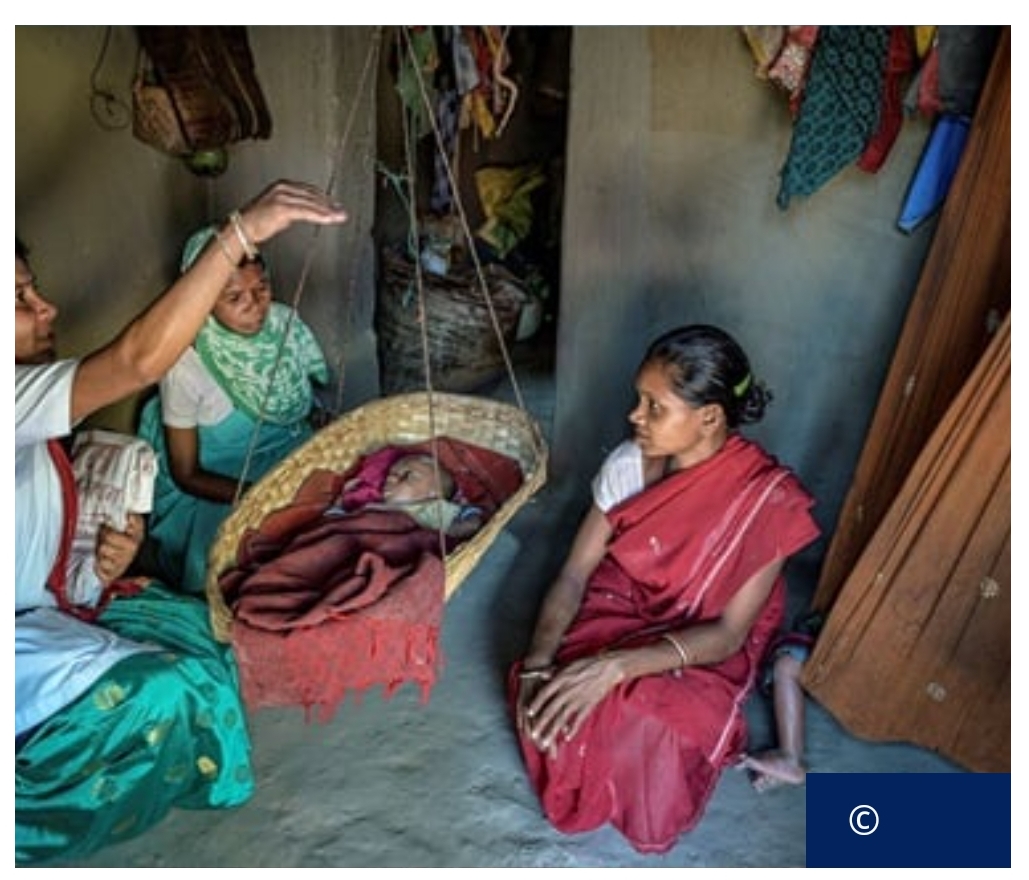Global Child Mortality Declines to 4.8 Million, But Stillbirths Remain High; UN Reports Warn of Funding Crisis Threatening Progress.
Shimla:
The number of children dying globally before reaching their fifth birthday has declined to 4.8 million in 2023, according to two new reports from the United Nations Inter-agency Group for Child Mortality Estimation (UN IGME). However, while there has been progress, stillbirths have only modestly decreased, remaining around 1.9 million annually. This marks a significant decline from 2000 levels, with child deaths dropping by over 50% and stillbirths decreasing by more than a third, driven by sustained global efforts to improve child survival.
In 2022, the world achieved a historic milestone when the number of child deaths fell below 5 million for the first time. Despite this progress, experts are raising alarms that advancements have slowed in recent years, with preventable child deaths still being a major challenge.
“Millions of children are alive today because of the global commitment to proven interventions, such as vaccines, nutrition, and access to safe water and basic sanitation,” said UNICEF Executive Director Catherine Russell. “Bringing preventable child deaths to a record low is a remarkable achievement. But without the right policy choices and adequate investment, we risk reversing these hard-earned gains, with millions more children dying from preventable causes. We cannot allow that to happen.”
Despite decades of progress in child survival, there are growing concerns about the future. Major donors have announced or indicated significant cuts in funding, potentially reversing the progress made in child health. These cuts are already impacting life-saving child survival programs, causing health-care worker shortages, clinic closures, disruptions to vaccination programs, and a lack of essential supplies such as malaria treatments. Regions already facing humanitarian crises or high child mortality rates, particularly in low-income countries, are most at risk.
“We must collaborate to protect and improve children’s health,” said Dr. Tedros Adhanom Ghebreyesus, Director-General of the World Health Organization. “In the face of global funding cuts, stepping up our efforts is more critical than ever to ensure children’s survival.”
Since 2015, the rate of reduction in under-five mortality has slowed by 42%, and the reduction in stillbirths has slowed by 53% compared to the period from 2000 to 2015. Experts highlight that almost half of under-five deaths occur within the first month of life, primarily due to premature birth and complications during labor. Beyond the newborn period, infectious diseases like pneumonia, malaria, and diarrhoea are the leading causes of preventable child deaths. Stillbirths, meanwhile, are often linked to maternal infections, prolonged or obstructed labor, and inadequate medical intervention during delivery.
The reports emphasize the importance of improving access to high-quality maternal, newborn, and child healthcare. This includes preventive and promotive care in communities, timely visits to health professionals, quality antenatal and postnatal care, vaccinations, and specialized care for sick or premature newborns.
“Most preventable child deaths occur in low-income countries, where essential services, vaccines, and treatments are often inaccessible,” said Juan Pablo Uribe, World Bank Global Director for Health. “Investing in children’s health ensures their survival and lays the foundation for future contributions to the workforce. With strategic investments and strong political will, we can continue to reduce child mortality and unlock opportunities for economic growth.”
The reports also highlight stark disparities in child survival rates based on geographic location. The risk of death before age five is 80 times higher in the highest-mortality countries compared to the lowest-mortality countries. Children born in sub-Saharan Africa are 18 times more likely to die before their fifth birthday than those born in Australia or New Zealand. Within countries, children from poorer households, rural areas, or those with less-educated mothers face significantly higher risks of death.
Stillbirths show similar disparities, with nearly 80% of them occurring in sub-Saharan Africa and Southern Asia. Women in these regions are six to eight times more likely to experience a stillbirth compared to women in Europe or North America. In low-income countries, the likelihood of stillbirth is eight times higher than in high-income countries.
“Disparities in child mortality across and within nations remain one of the greatest challenges of our time,” said Li Junhua, UN DESA Under-Secretary-General. “Reducing such differences is a moral imperative and a fundamental step towards sustainable development and global equity. Every child deserves a fair chance at life, and it is our collective responsibility to ensure no child is left behind.”
The UN IGME members have called on governments, donors, and both public and private sectors to prioritize protecting the progress made in saving children’s lives. Increased investments, service integration, and innovations are urgently needed to scale up access to life-saving health, nutrition, and social protection services for both children and pregnant women.
As the world continues to face challenges in global health funding, the need for coordinated efforts to improve children’s health has never been more urgent.




